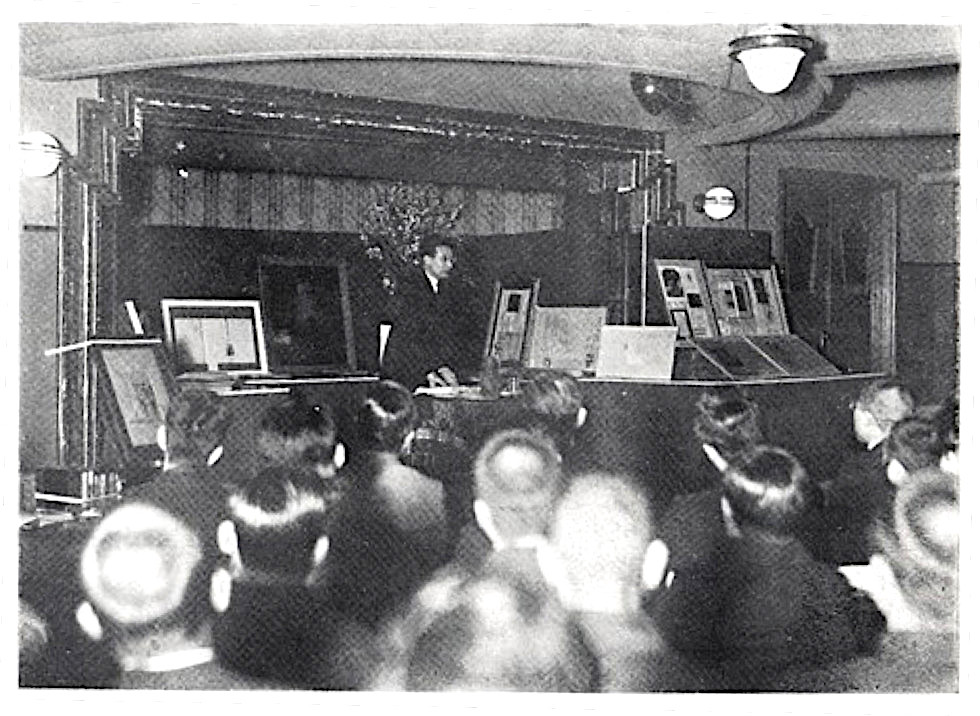
Ryuzo Mikimoto lecturing on Ruskin at Kyobashi Library, Tokyo on 29 March 1935, as shown in Haruka Miki's "Ryuzo Mikimoto and the Ruskin ‘Relics’ Exhibitions of 1926, 1931 and 1933," originally from The Journal of the Ruskin Society of Tokyo. "Mikimoto wanted to transform Japanese society through the dissemination of Ruskin's work" explains Grace Lavery (114), detailing his efforts to that end, which included founding a library, a society and a journal. Lavery argues that his cultish devotion and uncritical readings resulted in a view of Ruskin which was "breathtakingly remote" from the usual ones (116). But Mikimoto's promotion of Ruskin seems less idiosyncratic to one of his compatriots: to Haruka Miki, it represented "spiritual struggles characteristic of young Japanese intellectuals of the time," as they tried to encourage "peace-oriented pursuits under an oppressive military regime" (para. 4).
Photograph shown in an open edition of Miki's article, which has been made available on this Creative Commons licence. Text and formatting by Jacqueline Banerjee.
Link to Related Material
Bibliography
Hayashi, Kuichi. "Rasukin Sen ni Soute [In Line with Ruskin]." The Journal of the Ruskin Society of Tokyo. Vol. 5. No. 3 (1935): 69-79 (not found online).
Lavery, Grace. Quaint, Exquisite: Victorian Aesthetics and the Idea of Japan. Princteon and Oxford: Princeton University Press, 2019.
Miki, Haruka. "Ryuzo Mikimoto and the Ruskin ‘Relics’ Exhibitions of 1926, 1931 and 1933." Cahiers victoriens et édouardiens Online, 91 (Spring 2020). Web. 5 April 2023.
Created 5 April 2023